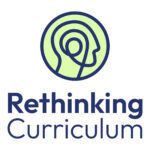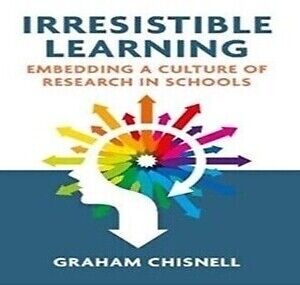Experiential learning for children aged 4-14

This article has been published as part of the Rethinking Curriculum project, kindly funded by The Helen Hamlyn Trust.
The Helen Hamlyn Centre for Pedagogy carried out a Rapid Research Review at the beginning of the Rethinking Curriculum project. This outlines various findings around experiential learning in primary schools and what should be considered in this approach. We draw on this comprehensive research review to provide a summary of the approach, along with potential impacts and implications for primary classroom practice.
To read the full report: https://discovery.ucl.ac.uk/id/eprint/10173743/
What is experiential learning?
Experiential learning is a dynamic educational approach where learners gain knowledge and skills through direct experiences. It includes:
- a hands-on approach – involves active participation in experiences.
- learning-by-doing – encourages the application of knowledge in real-world scenarios.
- reflective practice – learners think back on their experiences to extract lessons.
- skill and value development – aims to cultivate both practical abilities and personal values.
Why might experiential learning be a useful approach?
Ranken et al. (2023) argue that experiential learning can positively impact on areas such as student motivation and engagement, student agency, wellbeing and academic achievement. However, it is important to be mindful of wider research findings in education to maximise chances of successful implementation. With this in mind, we will look at each of the four areas in turn to consider the evidence around experiential learning alongside some evidence from wider education literature to offer some useful suggestions for practice.
1. Motivation and engagement
Research evidence repeatedly demonstrates that experiential learning can have positive effects on student engagement (Ranken et al., 2023). More specifically, studies draw attention to the effectiveness of ‘embodied experiences’ as a means of promoting children’s engagement with learning. Multi-sensory, kinaesthetic approaches are purported to encourage students to ‘absorb’ and ‘immerse’ themselves into the experience (Ranken et al., 2023: 14).
However, it is worth remembering that the term ‘engagement’ is not clearly defined in wider research literature and the indicators for being ‘engaged’ are not always observable (Kong, 2021). This can make it difficult to assess the effectiveness of any given strategy. In fact, wider research literature cautions us against equating ‘student engagement’ as a proxy for learning (Nuthall, 2007; Willingham, 2009; Coe, 2013). We should be mindful of activities in which students seem to be engaged or busy, but may not necessarily be actively participating in meaningful learning. These activities might appear to be beneficial in the short-term, but are less so in the long term. Instead, students should be encouraged to think deeply about the content, ensuring they are cognitively engaged with the activity or experience to reap the benefits in the long-term (Nuthall, 2007; Willingham, 2009; Coe, 2013).
Furthermore, we must be mindful of the evidence (or lack of) around adopting different learning stylesTheories relating to the idea that individuals learn best in different ways and teaching should be tailored to their learning styles – these have been widely debunked by research. Research findings repeatedly demonstrate that learning styles – the notion that learners prefer to receive information either visually, auditorily or kinaesthetically – do not, in themselves, improve student outcomes (Sharp et al., 2008; Pashler et al., 2008; Pasquinelli, 2012; Kirschner & van Merriënboer, 2013; Willingham et al., 2015; Kirschner, 2017). Whilst kinaesthetic approaches can be helpful for skill development and have potential to strengthen memory retrieval and storage, there is a risk that students remember the experience, and not the learning. This is why guided reflection plays such an important role in the experiential learning process. Teachers are integral in supporting students to make connections between the experience and their wider learning.
Ranken et al. (2023) also demonstrate that experiential learning opportunities can have a particularly positive impact on students with special educational needs and disabilities (SEND) and emotional and behavioural difficulties Studies demonstrate that experiential learning can enable students who are struggling with formal education to sustain engagement over a longer period of time (Ranken et al., 2023). However, researchers also acknowledge that these improvements may be due to strong relationships built with the facilitator throughout the process, rather than the experience itself (Ranken et al., 2023).
In addition, wider research literature cautions us against applying specific strategies as a means to support all students with SEND. SEND is a broad term, encompassing many different specific needs, making it difficult to say with any certainty that experiential learning can positively impact all students that fall under this category. Research findings demonstrate that a SEND diagnosis can provide a generic indication of a students’ educational needs but it is less helpful for making day-to-day decisions about pedagogical approaches and support (EEF, 2021a). We must recognise there is likely to be great diversityThe recognition of individual differences in terms of race, ethnicity, gender, sexual orientation, socio-economic status, physical ability, religious beliefs and other differences in this category, and the pedagogical approaches that will enable students to thrive in our schools. Instead, we must attempt to use our holistic understanding of the whole child to ensure we are adopting the most appropriate strategy (EEF, 2021a).
In terms of motivation, Ranken et al. (2023) demonstrate that experiential learning can increase student intrinsic motivation. More specifically, studies show that experiences and activities that are situated in real-life contexts are shown to heighten intrinsic motivation (Ranken et al., 2023). Real-world scenarios were commonly felt to be more meaningful and relevant to students’ lives, thus increasing their motivation around the learning. Longitudinal studies also reveal that experiential learning has the potential to sustain levels of motivation over time (Ranken et al., 2023).
However, as with ‘engagement’, the term ‘motivation’ lacks a clear definition – Boxer (2021) aptly describes it as a ‘complicated beast’. The research literature around motivation for learning also lacks consensus about ‘what works’ in practice (Cook & Artino, 2016). Despite this, evidence indicates that motivation can play a crucial role in determining pupil outcomes (Mcrea, 2020). One particular theory highlights that long-term motivation for learning may be linked to feelings of success; importantly success in things that are challenging for us (Ryan & Deci, 2000; Garon-Carier et al., 2015; Nuutila et al., 2018). As a result, it may be more important to prioritise strategies that improve student performance, rather than increase their short-term engagement.
Finally, Ranken et al. (2023) highlight that any positive effects on student motivation and engagement could be explained by other factors, including a sense of novelty and/or a break in routine.
2. Student agency
Experiential learning is shown to promote student agency (Ranken et al. 2023). Studies demonstrate that experiential learning opportunities enabled students to make independent choices, direct their own learning and collaborate with peers to solve problems (Ranken et al. 2023).
However, Ranken et al. (2023) indicate that some students found this new-found agency overwhelming. In particular, younger students (aged 4-7 years old) and those at the early stages of language acquisition were shown to struggle with the abundance of choice afforded to them during experiential learning interventions (Ranken et al. 2023).
In light of this, studies repeatedly draw attention to the important role facilitators play in scaffoldingProgressively introducing students to new concepts to support their learning student agency (Ranken et al. 2023). Opportunities for students to make decisions and direct their learning are most effective when they are structured and guided by the facilitators (Ranken et al. 2023). As such, it may be useful to consider the research literature around effective scaffolding to inform your approach. For example, we should be mindful not to over-scaffold the activity or experience – some ‘deliberate difficulty’ is both desirable and necessary for students to develop cognitive and metacognitive skills and foster greater independence (EEF, 2021b: 16). Similarly, there should be careful consideration of when to remove the scaffolding to avoid over-reliance on external support (EEF, 2021b). Whilst initially scaffolding may involve explicit modelling of thought processes or direct support from the teacher, this should be strategically removed over time. Teachers are encouraged to closely observe students and use formative assessment strategies to make appropriate decisions about when and how to remove this support (EEF, 2021b).
3. Student wellbeing
Experiential learning is shown to positively impact a range of wellbeing outcomes, including an increase in student confidence; an improvement in interpersonal relationships; decrease in absenteeism; a greater sense of community; an improvement in students’ feelings of empathy; a greater ability to regulate emotions and improved in-class behaviour (Ranken et al., 2023). Furthermore, longitudinal studies demonstrate that repeated and sustained experiential learning interventions enhance students’ wellbeing (Ranken et al., 2023).
Despite this, researchers acknowledge that improvements in student wellbeing may be caused by other factors, including having the time to develop relationships with peers in an environment with less constraints (Ranken et al., 2023).
4. Academic achievement
Experiential learning is shown to improve academic outcomes, particularly in subjects such as science and mathematics (Ranken et al., 2023). Experiential learning is frequently deployed in the teaching of science and is shown to improve students’ knowledge of the subject and use of scientific vocabulary (Ranken et al., 2023). Similarly, this approach is shown to positively improve students’ knowledge of maths vocabulary and critical thinking skills (Ranken et al., 2023). For example, one study revealed that after engaging with an experiential learning task, students’ explanations of how they arrived at a mathematical solution were clearer and more logical (Ranken et al., 2023).
Studies also demonstrate the positive effects of experiential learning on other areas of the curriculum (Ranken et al., 2023). For example, research findings indicate that it can improve students’ musical abilities, improve students’ oral language development and accelerate students’ progress in writing (Ranken et al., 2023). Evidence also suggests that the longer an experiential learning intervention continues, the greater the effects on student performance (Ranken et al., 2023).
Despite the positive effects, studies also found that experiential learning did not always achieve the intended academic aim (Ranken et al., 2023). For example, evidence suggests that students in some studies tended to remember the experience, rather than the skill or knowledge it was designed to teach (Ranken et al., 2023). Similarly, some students struggled to connect the experience to their existing learning (Ranken et al., 2023). Evidence indicates that when teachers were explicit in making links and supporting reflection, students were better able to describe the learning they have engaged in and make connections to their work in the classroom (Ranken et al., 2023). In light of this, it is worth revisiting the research literature around effective scaffolding to ensure successful implementation of this approach.
Finally, research evidence found that teachers felt that there was an ongoing conflict between experiential learning and the formal curriculum (Ranken et al., 2023). Teachers expressed that experiential learning can be time-consuming and often did not align with the requirements and pressures of the formal curriculum (Ranken et al., 2023). Other studies found that experiential learning was often conducted as a ‘one-off’ event, often delivered by external providers (Ranken et al., 2023). In light of this, Ranken et al. (2023) highlight the importance of giving teachers time and resources to embed experiential learning opportunities into the existing curriculum. In this way, experiential learning no longer is seen as a ‘supplement to the curriculum… but as a complement to it’ (Ranken et al., 2023: 26).
Wider research evidence concurs that experiential learning is most effective when it is embedded into the larger learning process. Scogin et al. (2017) also differentiate between short term experiential ‘activities’, and a large-scale change to the educational approach or programme. Any experiential learning activities should enable pupils to actively experience course content (Svinivki and McKeachie, 2011), and concrete experiences should be a part of a larger learning process, including pre-learning and post-learning reflection (Slavich and Zimbardo, 2012). Dehaene (2020) argues that this process should take place over days, not hours, in order to distribute and consolidate learning.
Implications for practice
Experiential learning can mean many different things to different people. As with any pedagogical approach, there are numerous ways it can be implemented, depending on the unique characteristics of the school context and/or students. However, it is important to understand the ‘active ingredients’ that make experiential learning distinct from other approaches. Most crucially, experiential learning goes beyond students simply engaging in a ‘hands-on’, practical task. It requires careful planning, facilitation and opportunities for guided critical reflection.
When thinking about implementing experiential learning, it may be helpful to consider the following take-aways from the research findings above to inform your approach:
- Ensure experiences are meaningful and relevant to your students. Incorporating real-life contexts and purpose may help this.
- Plan the experience carefully so that it provides an appropriate level of challenge, providing scaffolding to those who need it and supporting all students to be successful in challenging tasks.
- Be mindful of ‘surface-level’ engagement or busy participation as a proxy for learning; whilst we may want the learning to be enjoyable, meaningful engagement will require learners to engage cognitively with the experience.
- Support students to draw out the learning and make links and connections to their existing knowledge and the wider world around them.
- Experiential learning should not be a one-off, stand-alone approach. Teachers will need time, resources and training to effectively embed this approach into the wider curriculum.
- Remain cautious about adopting experiential learning as a tool to support specific students e.g. students with SEND. Instead, take a holistic approach, using formative assessment and knowledge of the student themselves, to ensure pedagogical choices and support meet their specific educational needs.
References
Boxer A (2021) What is the best way to motivate students in your subject? Available at: https://my.chartered.college/impact_article/what-is-the-best-way-to-motivate-students-in-your-subject/ (accessed 29 April 2024).
Cook D & Artino A (2016) Motivation to learn: an overview of contemporary theories. Medical Education 50(10): 997-1014
Dehane, S. (2020) How We Learn: the new science of education and the brain. Penguin.
Education Endowment Fund (EEF) (2021a) ‘Special Educational Needs in Mainstream Schools Guidance Report’ Available at: https://d2tic4wvo1iusb.cloudfront.net/production/eef-guidance-reports/send/EEF_Special_Educational_Needs_in_Mainstream_Schools_Guidance_Report.pdf?v=1714640692 (accessed on 29 April 2024)
Education Endowment Fund (EEF) (2021b) ‘’Metacognition and Self-regulated Learning Guidance Report’ Available at: https://d2tic4wvo1iusb.cloudfront.net/production/eef-guidance-reports/metacognition/EEF_Metacognition_and_self-regulated_learning.pdf?v=1714642823 (accessed on 29 April 2024)
Garon-Carrier G, Boivin M & Guay F et al. (2015) Intrinsic motivation and achievement in mathematics in elementary school: A longitudinal investigation of their association. Child Development 87(1): 165–175
Kirschner PA (2017) Stop propagating the learning styles myth. Computers & Education 106: 166–171.
Kirschner PA and van Merriënboer JJG (2013) Do learners really know best? Urban legends in education. Educational Psychologist 48(3): 169–183
Kolb, D. A. (1984). Experiential learning: Experience as the source of learning and development (Vol. 1). Englewood Cliffs, NJ: Prentice-Hall.
Kong Y. (2021) The Role of Experiential Learning on Students’ Motivation and Classroom Engagement. Front Psychol. 12:771272.
Pashler H, McDaniel M & Rohrer D et al. (2008) Learning styles: Concepts and evidence. Psychological Science in the Public Interest 9(3): 105–119
Pasquinelli E (2012) NeuromythsCommon misconceptions about the brain: Why do they exist and persist? Mind, Brain, and Education 6(2): 89–96
Mccrea P (2020) Motivated teaching: Harnessing the science of motivation to boost attention and effort in the classroom. CreateSpace.
Nuthall G (2007) The Hidden Lives of Learners. Wellington, New Zealand: NZCER Press.
Nuutila K Tuominen H, Tapola A et al. (2018) Consistency, longitudinal stability, and predictions of elementary school students’ task interest, success expectancy, and performance in mathematics. Learning and Instruction 56: 73–83
Scogin, S. C., Kruger, C. J., Jekkals, R. E., & Steinfeldt, C. (2017). Learning by Experience in a Standardized Testing Culture: Investigation of a Middle School Experiential Learning Program. Journal of Experiential Education, 40(1), 39-57.
Sharp JG, Bowker R & Byrne J (2008) VAK or VAK‐uous? Towards the trivialisation of learning and the death of scholarship. Research Papers in Education 23(3): 293–314
Slavich, G.M., Zimbardo, P.G. (2012) Transformational Teaching: Theoretical Underpinnings, Basic Principles, and Core Methods. Educ Psychol Rev 24, 569–608
Ranken E, Manyukhina Y, Wyse D & Bradbury A (2023) Experiential Learning for Children Aged 4-14: A Rapid Evidence Assessment. Helen Hamlyn Centre for Pedagogy (0 – 11 years), UCL Institute of Education: London, UK. Available at: https://discovery.ucl.ac.uk/id/eprint/10173743/ (accessed on 29 April 2024)
Ryan R & Deci E (2000) Self-determination theory and the facilitation of intrinsic motivation, social development, and well-being. American Psychologist 55(1): 68–78
Willingham DT, Hughes EM & Dobolyi DG (2015) The scientific status of learning styles theories. Teaching of Psychology 42(3): 266–271











